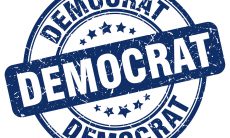Search engine optimization is a complex process that is ongoing. As a business changes, its industry changes, and its competitive environment online changes, an SEO campaign needs to be updated along with it. SEO is typically broken up into phases, the first of which is on site optimization which involves making changes to the actual website in order to appeal to the search engine spiders for specific keyword searches and provide target audience members with relevant information. An optimized website that builds inbound links over time will be better positioned on a search engine results page and will generate more traffic over time. The on site optimization basics include incorporating keywords naturally into the content on the page and writing customized titles and meta descriptions for each page of content.
However, there is much more to think about and these additional factors can also have important SEO implications:
The URL Structure
The URL shouldn’t be thought of as only the link. It should be viewed as another description of the content on the page and should include keywords that are targeted on that page. This provides the search engines with valuable information and also helps for usability purposes. A URL that looks like this: http://www.company.com/7203nfn3923 isn’t telling the search engines or website visitors anything about the page. Use this online real estate wisely. A URL should be concise and descriptive of the content on the page. If a URL is easy to remember, a user is more likely to go directly to the page and it will take them less time to find what they are looking for. If you are optimizing your site and decide that you need to clean up your URLs, be sure to include a 301 redirect!
Internal Links
Website owners tend to focus more on inbound links from external sites when it comes to SEO, but you can’t forget about the internal links from one page to the next on your own site. If the internal linking structure isn’t clean, it makes it hard for the search engine spiders to crawl the site and for visitors to navigate it.
Image Tags
If you are going to include an image on a web page, be sure to include an image tag. Since the search engine spiders can’t “see,” the image tag will tell them what the image is. An image tag should include keywords as long as it makes sense to do so.
Image File Names
If you are hosting images on your website, these images have URLs associated with them. Instead of just naming each image “Image001,” “Image002,” etc. create a file name that describes what the image is.
Page Load Time
The search engines want to provide users with the best possible results, which is why page load time is a ranking factor. The search engines don’t want to direct users to a slow loading site that will frustrate them. It’s important to analyze the load time of each of your pages. Anything more than 5 seconds is too long. Common culprits of slow page load time are too many images or multimedia files or sloppy code with too much HTML information.
So don’t worry if this seems like a lot of steps–nobody takes all of these steps at the same time.






